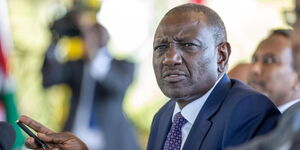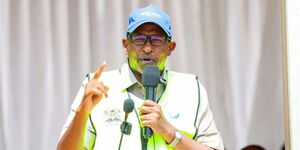Kenya received a significant boost to its family planning efforts on Thursday, May 16, with the arrival of a new consignment of self-injectable contraceptives aimed at providing enhanced protection for women across the country.
The shipment, consisting of 450,000 doses of self-injectable contraceptives, was procured by the United Nations Population Fund (UNFPA) with funding of over Ksh57 million from the UK government.
These contraceptives are set to be distributed by the Ministry of Health to various health facilities nationwide, making family planning services more accessible.
According to officials, this initiative has the potential to avert over 122 maternal deaths, 12,310 unsafe abortions, and 42,750 unintended pregnancies in Kenya.
The self-injectable contraceptives, known as depot medroxyprogesterone acetate in its subcutaneous form (DMPA-SC), have been hailed for their ease of use and effectiveness. They require minimal training, allowing community health workers, pharmacists, and even women themselves to administer the injections.
The World Health Organisation (WHO) has recommended the use of self-administered injectable contraception as an additional approach to delivering injectable contraception for individuals of reproductive age. This method not only reduces access-related barriers for women but also enhances contraceptive continuation rates and women's autonomy in making reproductive health choices.
A study conducted by Jhpiego, in collaboration with Kenya's Ministry of Health and funded by the Bill & Melinda Gates Foundation, paved the way for the introduction and scale-up of DMPA-SC in Kenya. This culminated in the approval of a new national training package for pharmacists and pharmaceutical technologists, including training on subcutaneous and intramuscular DMPA.
Despite significant progress, barriers to family planning persist, particularly in hard-to-reach regions. The 2022 Kenya Demographic and Health Survey revealed a national unmet need for family planning of 14 per cent, with certain counties reporting even higher rates.
To properly administer the self-injectable contraceptive, follow these steps:
1. Wash Hands: Begin by thoroughly washing hands with soap and water to ensure cleanliness and minimise the risk of infection.
2. Prepare Syringe: Remove the syringe from its package and shake it vigorously for approximately one minute to ensure proper mixing of the contents.
3. Remove Air Bubbles: Hold the syringe with the needle pointing upwards and tap it gently to allow any air bubbles to rise to the top. Then, carefully push the plunger until all air bubbles are expelled from the syringe.
4. Select Injection Site: Choose the injection site, which is typically either the abdomen or the anterior thigh. Clean the chosen area with an alcohol pad and allow it to dry completely.
5. Prepare Needle: Remove the cap from the needle and hold the syringe firmly in the dominant hand.
6. Insert Needle: With the non-dominant hand, grasp the skin around the selected injection site. Insert the needle at a 45-degree angle until it is fully submerged in the skin.
7. Administer Injection: Press the plunger on the syringe steadily until all the contents have been injected. Maintain the needle in place for a count of five seconds to ensure proper delivery of the contraceptive.
8. Remove Needle: After the injection is complete, carefully withdraw the needle from the skin and promptly dispose of it into a designated sharps container to prevent accidental needle stick injuries.
9. Apply Pressure: Apply light pressure to the injection site with a clean cotton ball or gauze pad to minimise bleeding. Avoid massaging the area, as this may cause discomfort or bruising.












